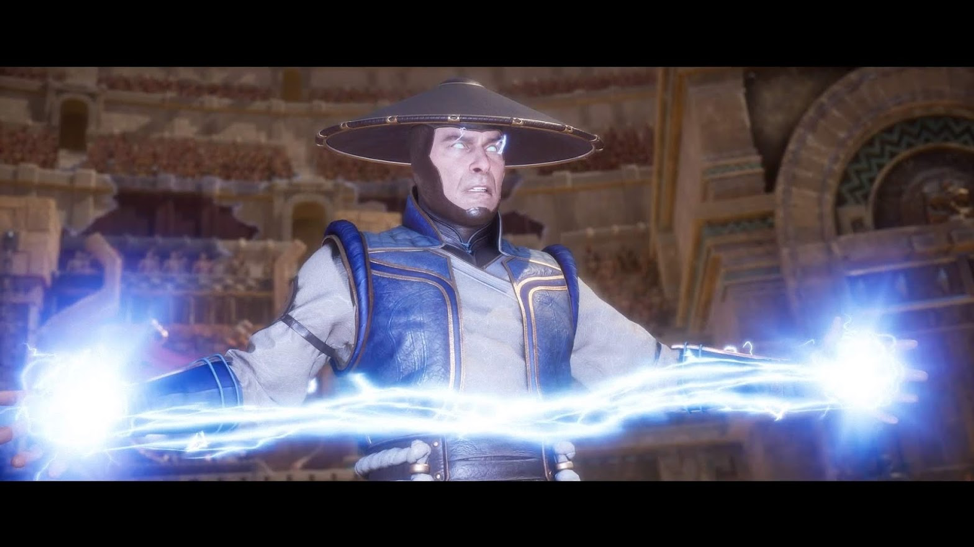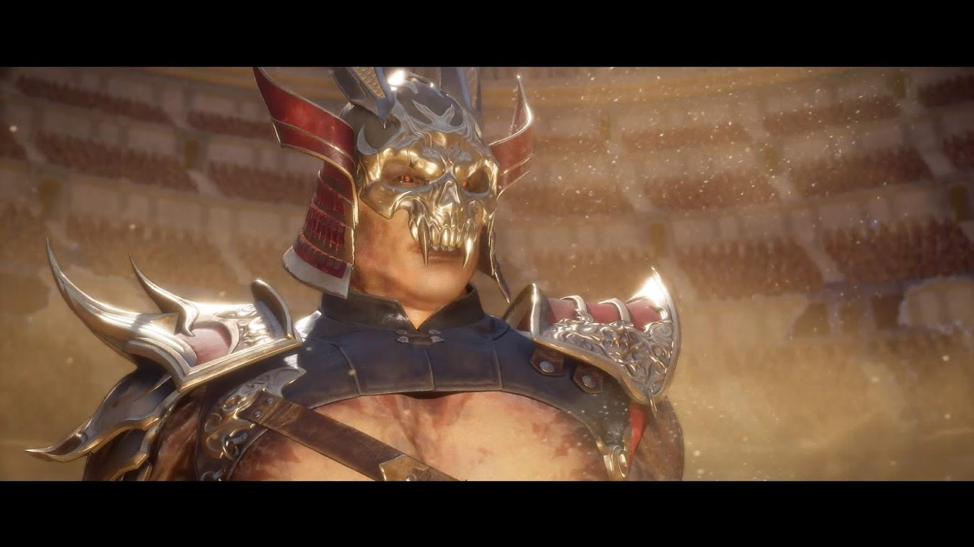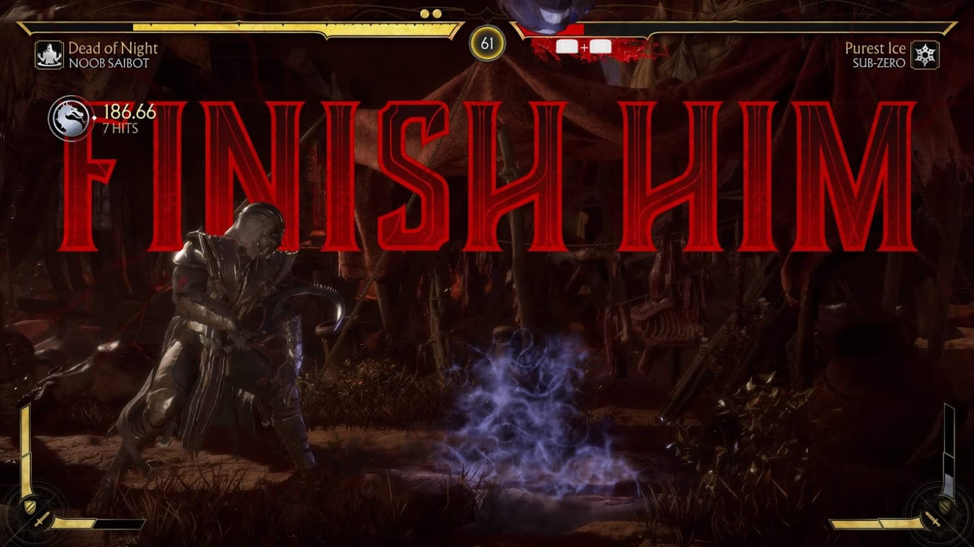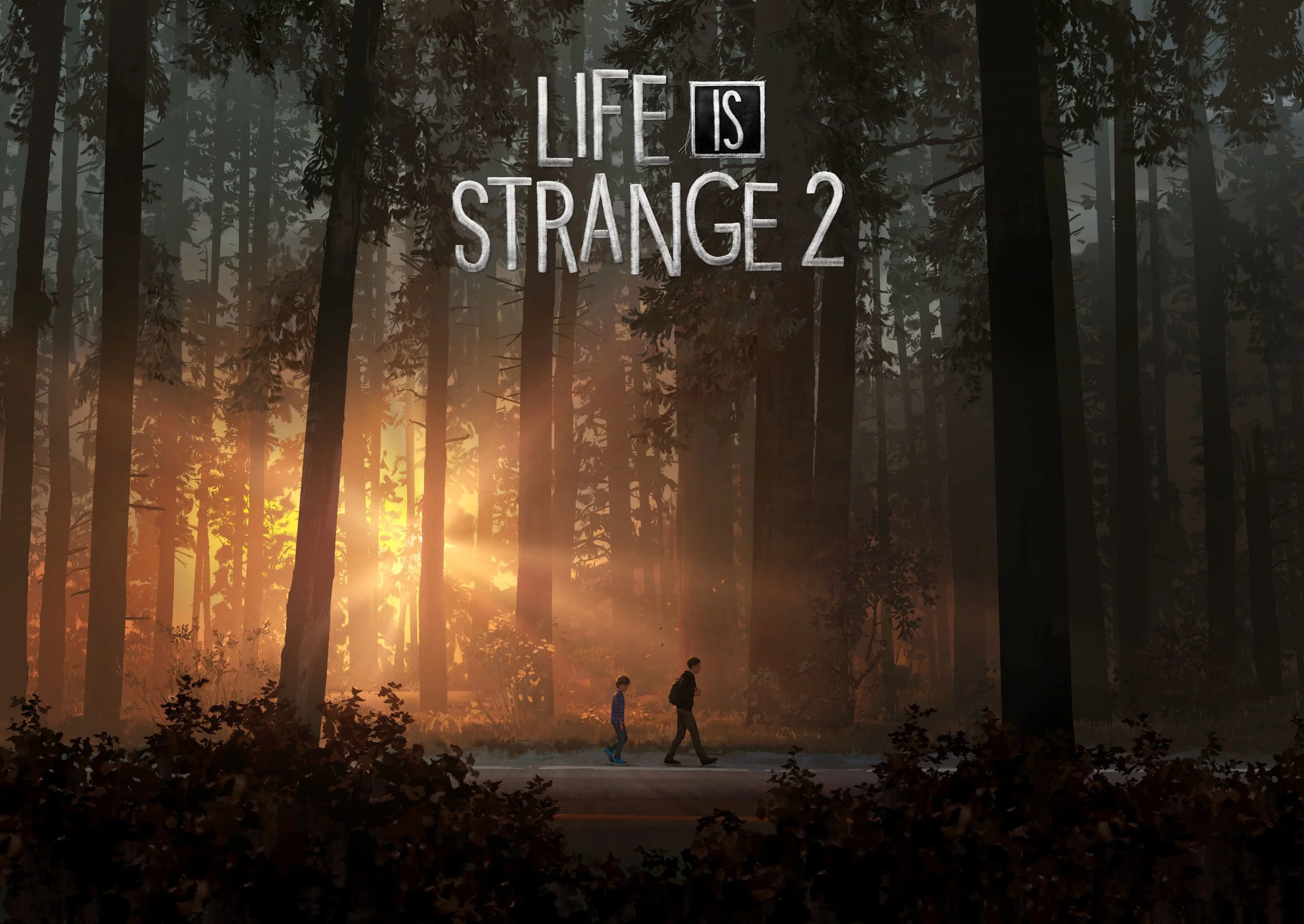Review | Mortal Kombat 11
The series has come Baraka
FINISH HIM!
The announcer shouted these words at my friend and I as they flashed across the Mortal Kombat II cabinet screen in red and yellow. As my friend’s characters stood there stunned, another quickly told me a series of buttons, and I hurriedly input them. I watched as my character, Baraka, slashed my at friend’s character and decapitated him. I was stunned. I’d never seen anything so violent in a game before, and soon we were all laughing and putting more quarters into the machine. Almost anyone who played a Mortal Kombat game as a kid likely has a similar story, and Mortal Kombat 11 carries the same spirit of laughing and shouting “Did you see that???” that its predecessors did, while also pushing the series forward in (nearly) every way.
The Thunder God Has Upset the Balance of History
Mortal Kombat 11 is a continuation of a story that began back in 2011 when Mortal Kombat developer Netherrealm Studios set the standard for fighting game story modes with Mortal Kombat 9. They’ve continued this trend with every game since then, and Mortal Kombat 11 is no exception. The story this time centres around a new villain named Kronika, who is the keeper of time in the Mortal Kombat universe. Kronika has taken issue with Raiden, the god of thunder, messing with the timeline and changing the events of Mortal Kombat 1-3 since MK9. Though this sounds confusing, it makes perfect sense in the context of the game, especially if one has kept up with the story since 9.
The story is over-the-top and ridiculous in a way that is reminiscent of an incredibly violent Saturday morning cartoon, but it takes itself seriously seriously enough that it is very compelling. The time-travel focus of the story also allows for some really good fanservice moments where older versions of characters meet their younger selves, or previously dead characters get to interact with new characters that were introduced in later games. A particularly standout example of this is older Johnny Cage talking with his younger, more obnoxious, self. Another is Shao Kahn (the best villain in the series) meeting and fighting Outworld’s new leader, Kotal Kahn, who has taken over since Shao Kahn’s death in MK9.
The only sour spot in the story is the inclusion of former UFC fighter Ronda Rousey as Sonya Blade. Her performance as Sonya is bland and flat, and sticks out even more than it usually would when the rest of the cast are all doing truly excellent jobs. Every time Sonya spoke, I was pulled out of the experience, not just because of the awful delivery, but also because of various controversial comments that Rousey has made in the past that make her inclusion questionable. However, Sonya’s (and by extension, Rousey’s) role in the story is relatively short, so it is not quite enough to significantly harm the story. Overall, Mortal Kombat 11 sets the bar for fighting game story modes even higher than its predecessors.
“Round 1. Fight!”
Netherrealm has made some changes to how fights play out in Mortal Kombat 11. There is more of a focus on what is called “neutral” in fighting games, which leads to more strategic matches. Juggle combos are less common, so players will spend less time helplessly in the air. They’ve removed the three-bar meter that they’ve used in previous games and replaced it with separate meters for offensive actions and defensive actions. This encourages players to use more of these options with less fear of wasting resources. The developers also encourage players to use cinematic moves called “crushing blows” by having them be completely separate from the offensive and defensive meters. Now when a player falls below 30% health, they gain access to their character’s crushing blow, which is a gruesome, cinematic move that deals a lot of damage. These were “x-ray moves” in previous games, but were rarely used in high-level play because they used the same resources as the offensive and defensive options.
If all of this sounds confusing, don’t worry. Mortal Kombat 11 has a very in-depth and effective tutorial that not only introduces fighting game concepts and terminology, but also demonstrates how those concepts work in an actual match. At least at a lower-level of play, these changes are all welcome and make Mortal Kombat 11 a more cerebral fighting game than the series has been in the past.
Take What You Want...Within Reason
Mortal Kombat has always contained a lot of single-player content, and Mortal Kombat 11 is no different. The “Towers of Time” mode provides challenge towers for players to fight through in addition to the story mode. At launch, many of these towers were filled with modifiers that made them nearly impossible to finish unless the player had grinded for hours to get consumables that negated the modifiers. However, since launch, Netherrealm has eased up the modifiers on the towers and has made them much more manageable. These towers reward cosmetic options for characters, finishing moves, and various currencies that can be used to unlock items in the Krypt, a separate area that players explore in third-person that is filled with easter eggs, callbacks to previous games, and puzzles.
The Krypt is very cool for people who are familiar with the series, but the way rewards are unlocked in it puts a slight damper on the experience. In previous games, the locations of rewards in the Krypt were fixed, so players could look up where to find items they wanted. The Krypt in Mortal Kombat 11 is random, which means players could hunt for hours for a specific item and not find it. It’s not clear why this change was made either. Since players can’t spend money to unlock items in the Krypt, there’s seemingly no reason for the locations to be random. It’s a confusing change that hurts what is otherwise a very cool mode.
Vacate My Throne, or I Will Soak These Sands with Your Blood!
Mortal Kombat 11 is an improvement on the Mortal Kombat formula in almost every way. The characters are fun to play, the graphics are amazingly detailed, and the sound design continues to be fantastic. The fatalities are the best the series has had. They’re all over-the-top and incredibly violent, but they’re not malicious. There’s a certain levity to them that makes the violence tolerable. The online netcode, lobbies, and other features are also very good. In addition, the story is a lot of goofy fun while also maintaining a certain level of seriousness that makes it a joy to play through, with an ending that is very satisfying and makes me excited to see where they take the series from here. There are some improvements that could be made to the Towers of Time and the Krypt, but Netherrealm has already shown that they are willing to listen to community feedback on these modes. The amount of single-player content and the in-depth and thorough tutorials make Mortal Kombat 11 a really good place for new players to start, though I would recommend catching up on the story since Mortal Kombat 9 first, while the changes to various gameplay systems make it a strategic and satisfying game to play. All of this has made Mortal Kombat 11 my favourite game in the series yet.
Review Roundup:
Pros
-Fighting is more neutral-focused and less combo-focused
-Excellent story mode
-Voice acting is very good (mostly)
-Looks really fantastic
-Fatalities are great
-Characters are all fun
-Excellent tutorial
Cons
-Ronda Rousey
-Towers are grindy, but they've improved this
-Random item locations in the Krypt











